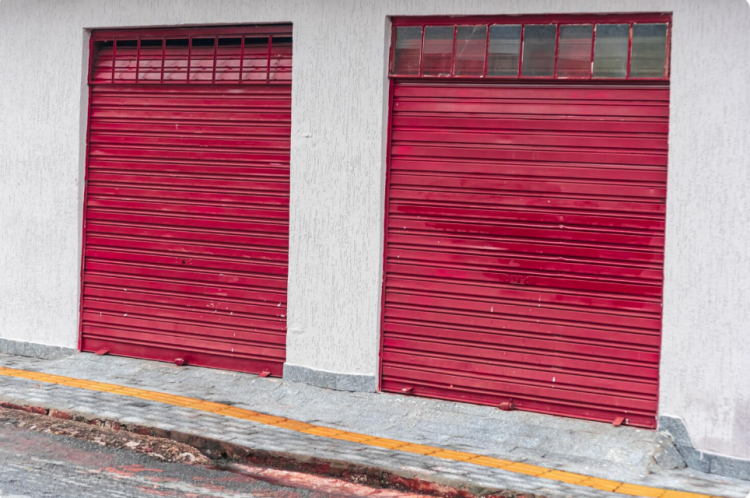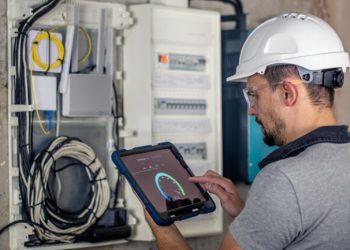Introduction: When Your Garage Door Starts Acting Up
Garage doors are one of the hardest-working parts of any home. Day in, day out, they open and close countless times keeping your car secure, protecting your tools and belongings, and acting as a key entry point to your house. But like any mechanical system, things can go wrong. And when they do, it can throw off your whole routine.
The good news? Many common garage door problems are easy to identify and in some cases, even fix on your own. In this guide, we’ll walk through the most frequent issues Aussie homeowners run into with their garage doors, what causes them, and what you can do to sort them out before they become serious (and costly) problems.
1. The Door Won’t Open or Close
One of the most common (and annoying) issues is when your garage door simply refuses to open or close. This can be caused by:
- Dead batteries in your remote
- Misaligned safety sensors
- A disconnected motor
- A broken torsion spring
How to Fix It:
Start with the simple stuff: replace your remote batteries, make sure the opener is plugged in, and check the sensor lights at the base of the tracks. If nothing seems obviously wrong, don’t force the door call in a professional to avoid causing further damage.
2. Noisy Garage Door Operation
Does your garage door groan, squeal, or bang every time it moves? While some noise is normal, excessive sound often means something’s wrong.
Possible causes include:
- Loose nuts and bolts
- Worn-out rollers or hinges
- Lack of lubrication
- Bent tracks
How to Fix It:
Tighten hardware with a spanner and apply a silicone-based lubricant to moving parts. If the rollers are made of metal and are worn down, consider switching to nylon rollers; they’re quieter and last longer.
3. The Door Reverses Before Hitting the Ground
If your garage door starts to close but immediately reverses, it’s likely a safety feature being triggered.
Reasons this happens:
- Misaligned or dirty sensors
- Obstruction in the door’s path
- Travel limit or force settings are off
How to Fix It:
Clean your sensors and make sure they’re aligned. Remove anything near the door’s path, including tools or garden equipment. If the issue persists, check your opener’s settings (usually located on the unit itself or in the user manual).
4. The Remote or Wall Button Isn’t Working
When neither your remote nor wall control seems to do anything, it’s often an electrical or signal problem.
Check for:
- Dead remote batteries
- Tripped circuit breakers
- Disconnected opener power source
- Wiring issues (especially in older garages)
How to Fix It:
Replace the remote batteries and make sure the opener is getting power. If the wall control is unresponsive, the wiring behind it may be damaged; this is best left to a technician.
5. Door Moves Unevenly or Gets Stuck
An uneven or jerky garage door usually points to a balance issue.
Common causes:
- Worn or broken springs
- Damaged cables
- Warped or bent tracks
How to Fix It:
While it might be tempting to fix a spring yourself, don’t. Springs are under high tension and can cause serious injury if released suddenly. For these types of issues, it’s best to rely on experienced garage door repairs services. Professionals can safely inspect and adjust the tension system, replace cables, and realign tracks without putting you or your garage at risk.
6. The Door Feels Heavy to Lift
If your garage door is manual or the motor fails, you may notice the door suddenly feels extremely heavy when lifting. This typically means the springs are no longer assisting with the door’s weight.
How to Fix It:
Don’t keep trying to open the door; it could drop unexpectedly. This is a sign your torsion or extension springs need replacing. Leave it to the experts. Springs should only ever be handled by trained professionals.
7. Sagging Sections or Gaps Under the Door
Over time, panels on your garage door can warp, sag, or lose alignment especially on timber models.
This can lead to:
- Poor insulation
- Pest entry
- Water leaks
How to Fix It:
If the sag is minor, some reinforcement brackets might help. However, widespread panel sagging, rusting, or structural fatigue means it might be time to consider a full Garage Door Replacement. New doors offer better weather sealing, insulation, and durability especially in Australia’s harsh climate.
8. Garage Door Opens Randomly on Its Own
While it sounds spooky, this issue is more common than you’d think. It’s usually caused by:
- Interference from nearby devices (e.g. neighbour’s opener using the same frequency)
- Faulty remotes or control boards
- Wiring issues in the wall switch
How to Fix It:
Try resetting your opener and reprogramming your remotes. If the issue continues, you may need to change your opener’s frequency or upgrade to a newer, more secure system.
Final Thoughts
Garage doors are one of the most underrated systems in any home until they stop working. The key to avoiding expensive emergencies is recognising small issues early and acting fast.
From minor adjustments to full-scale garage door repairs, knowing what you’re dealing with gives you the power to fix it properly or call in help when needed. And if your door is simply beyond saving, a Garage Door Replacement might just be the smartest move for your safety, comfort, and peace of mind.
So next time your garage door acts up, don’t panic just run through this checklist and decide whether it’s a quick fix or time for the pros to step in.









